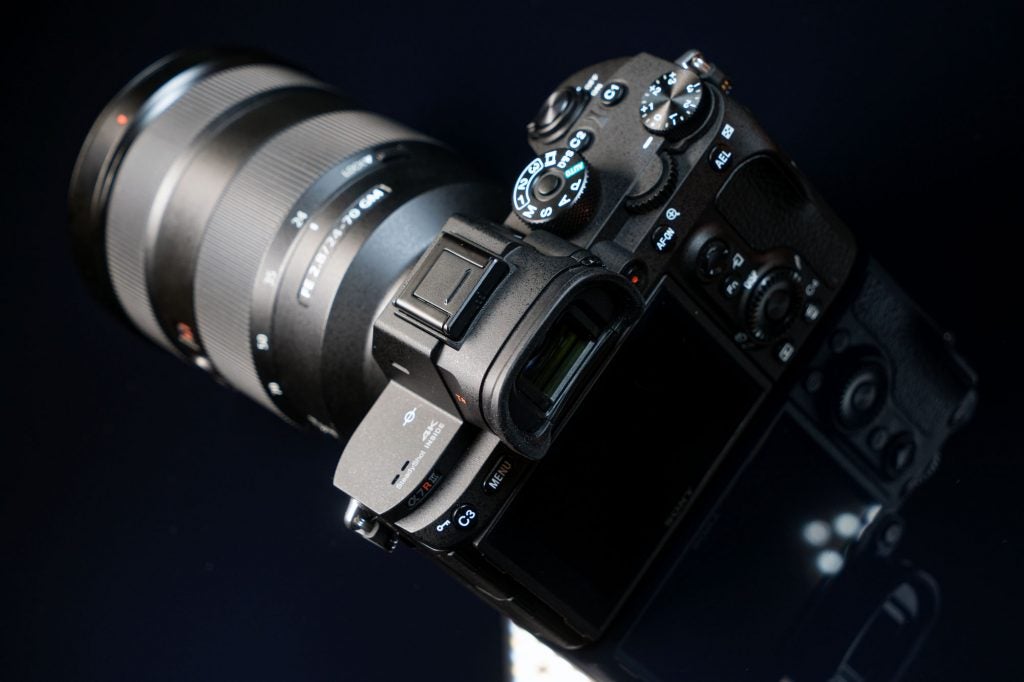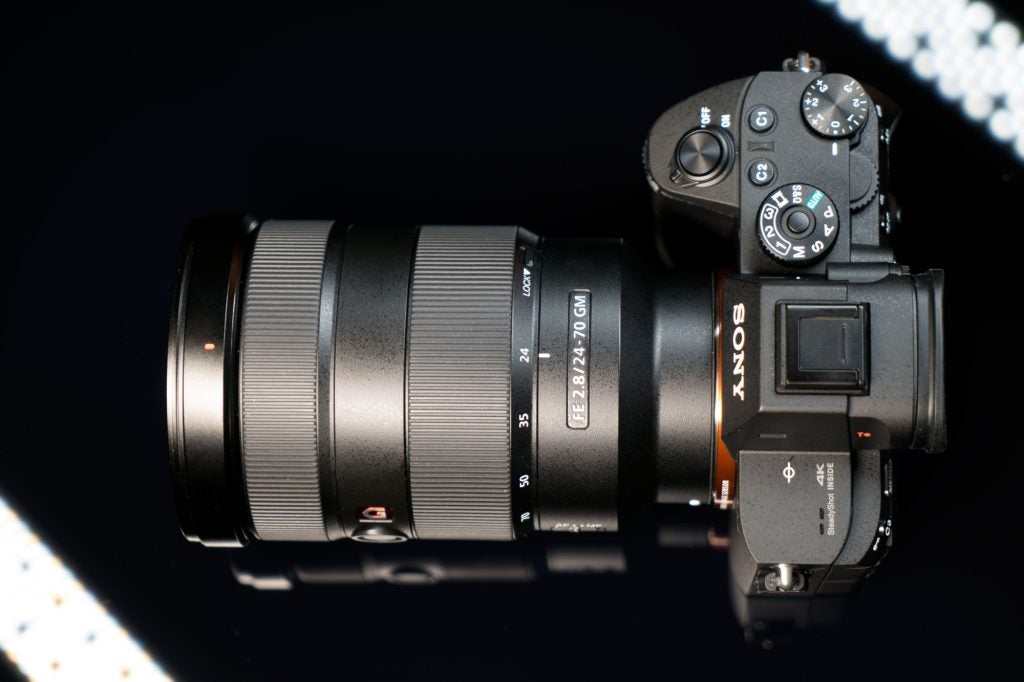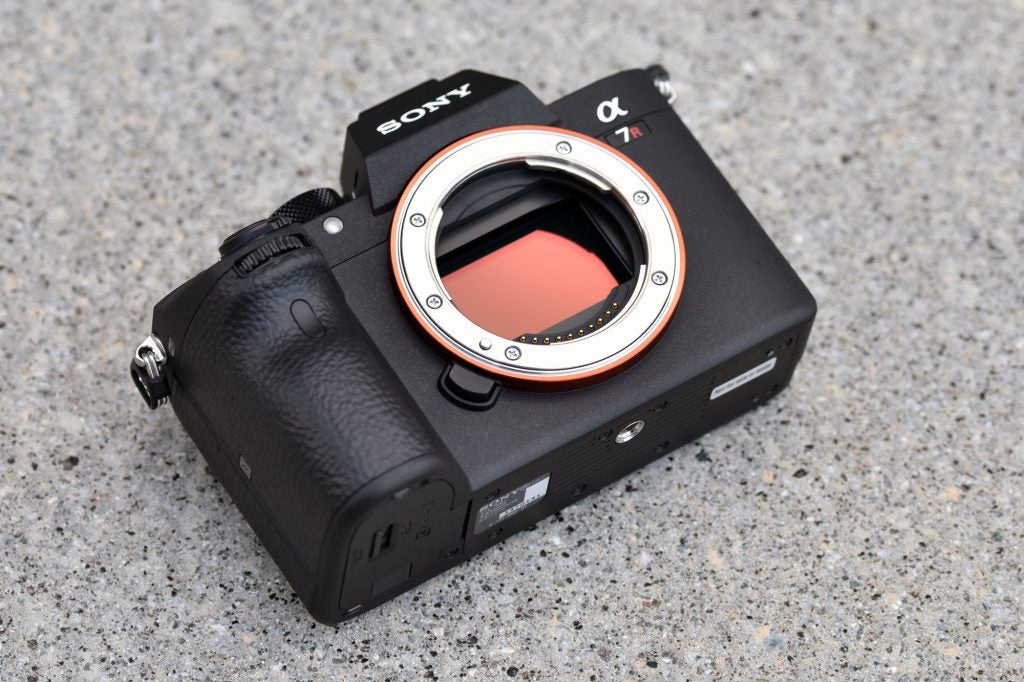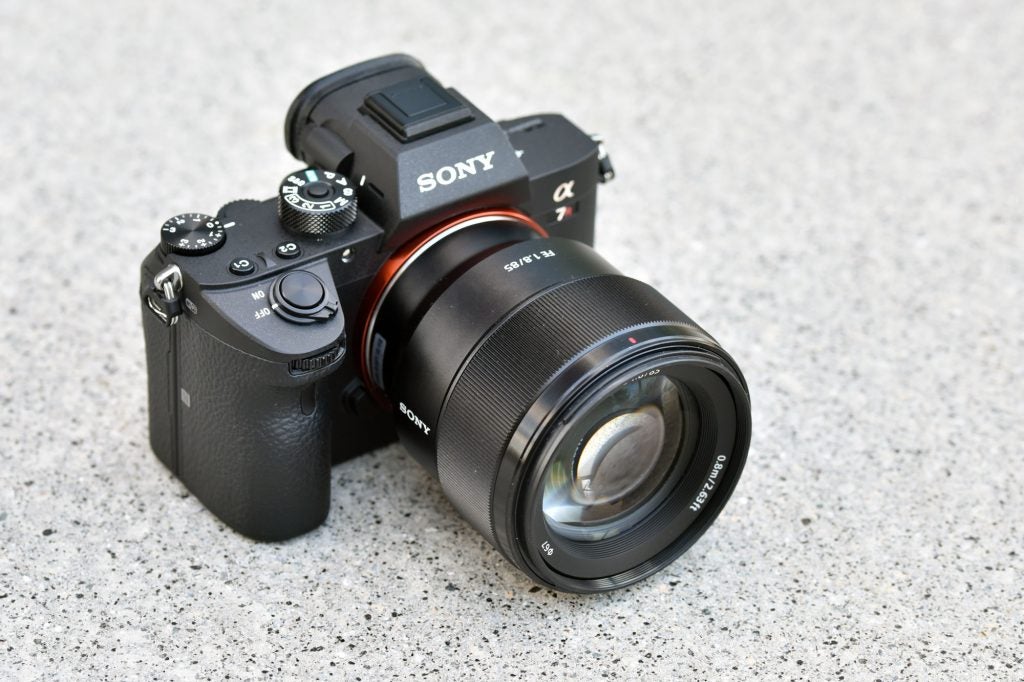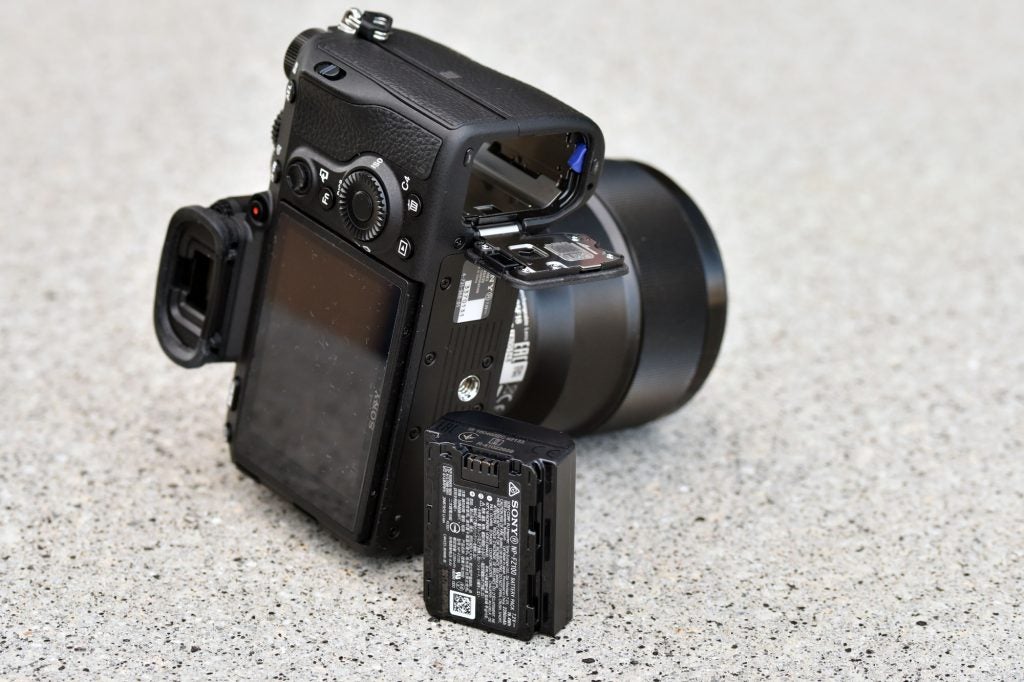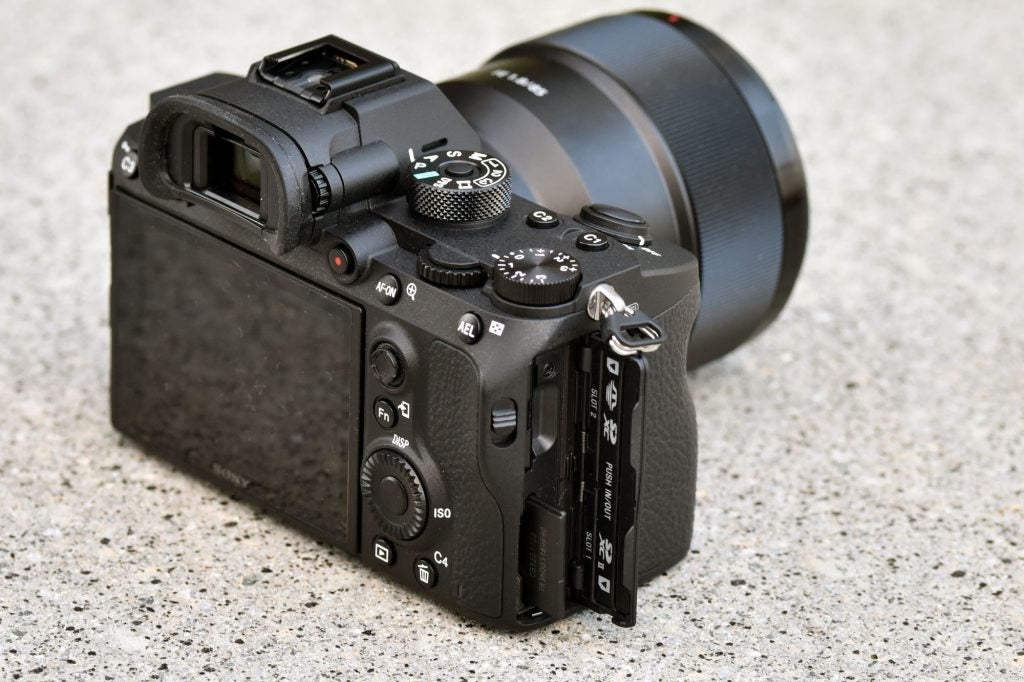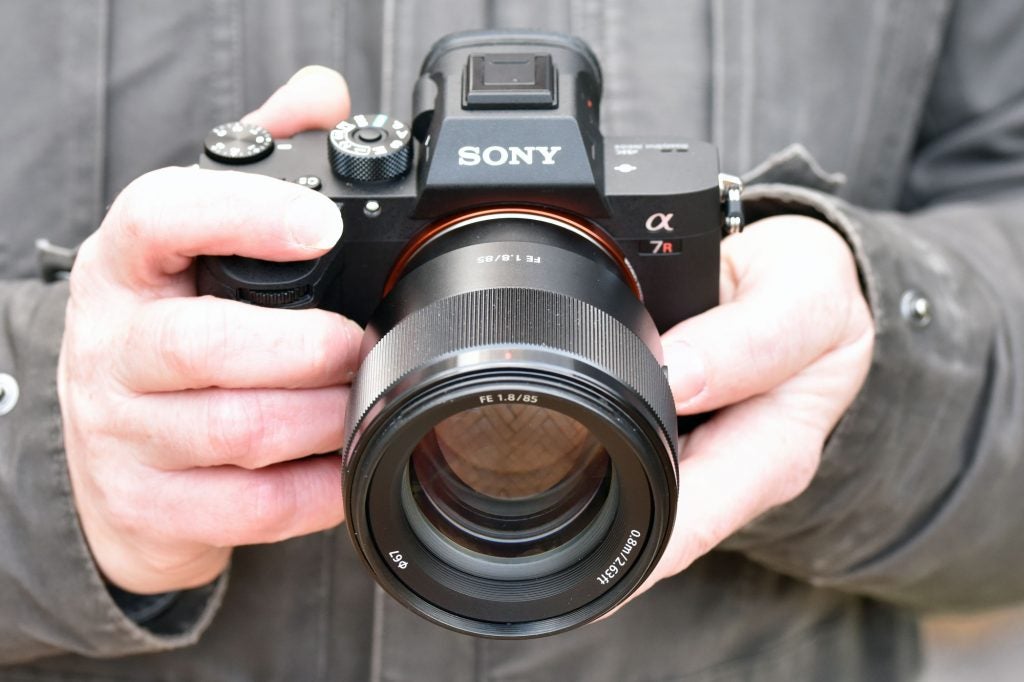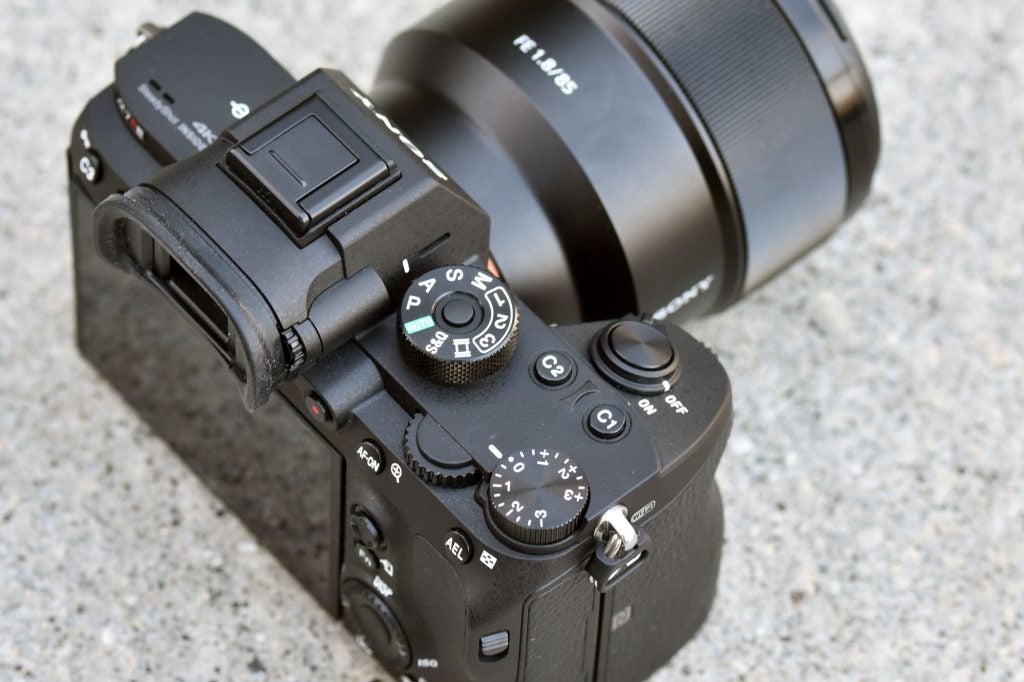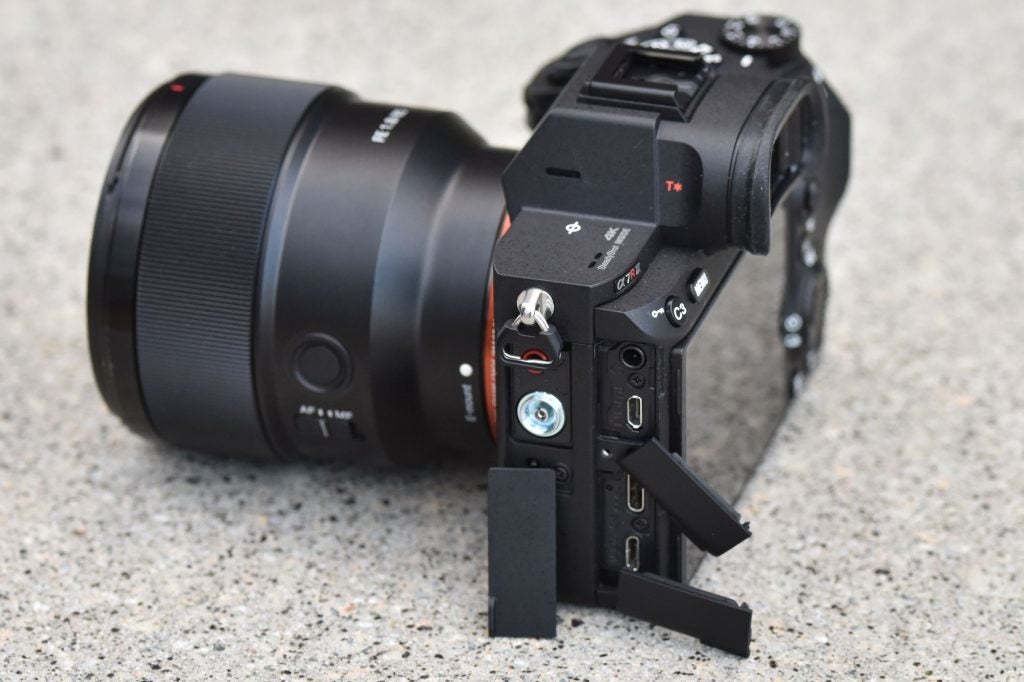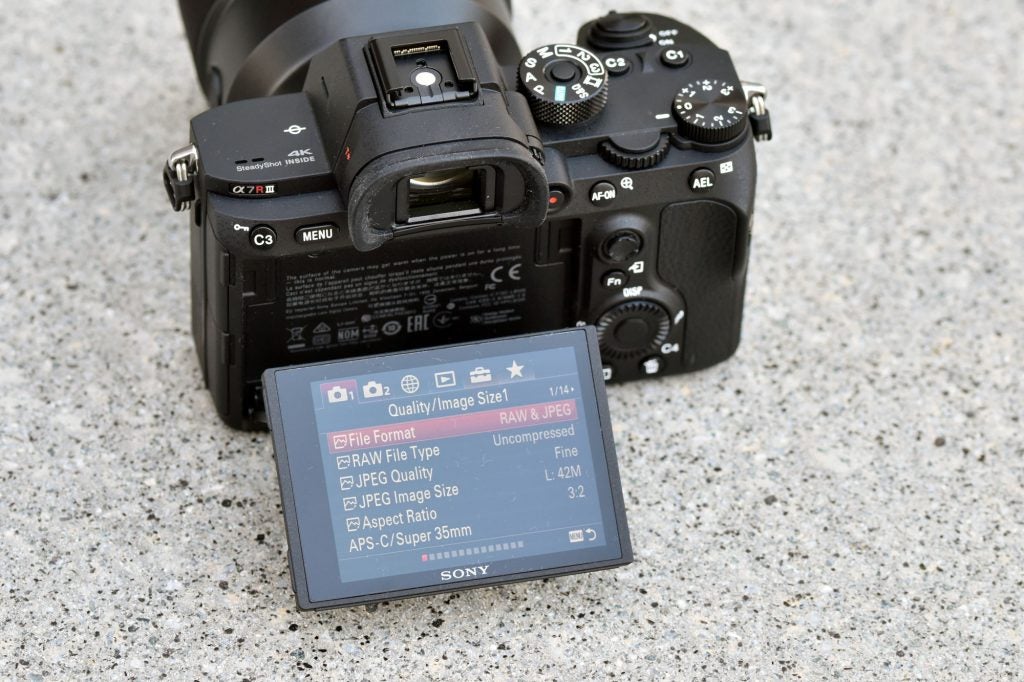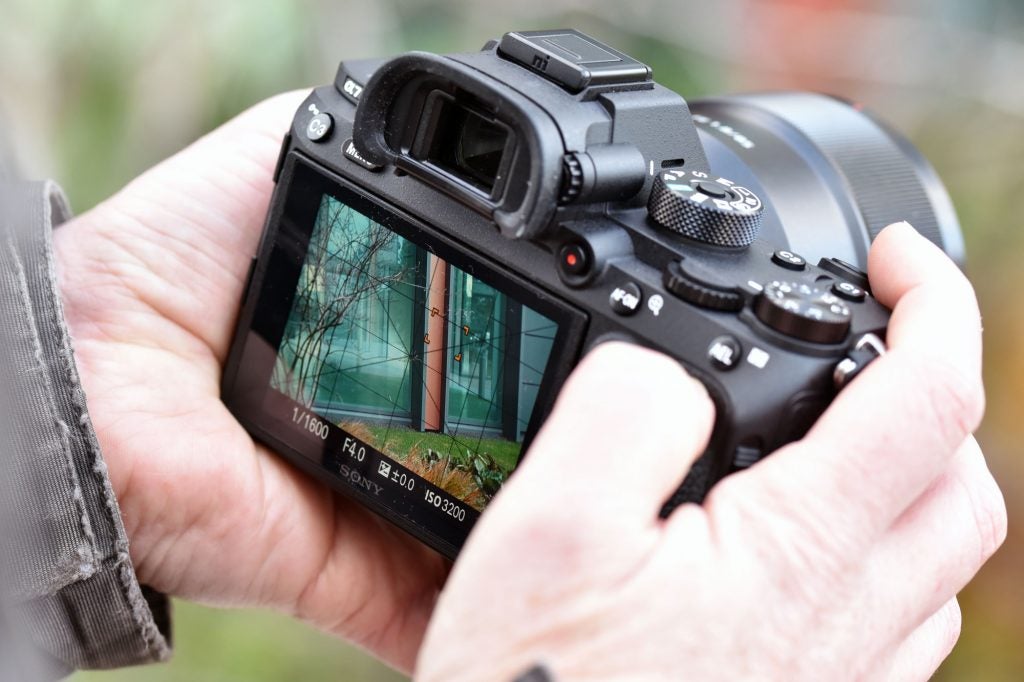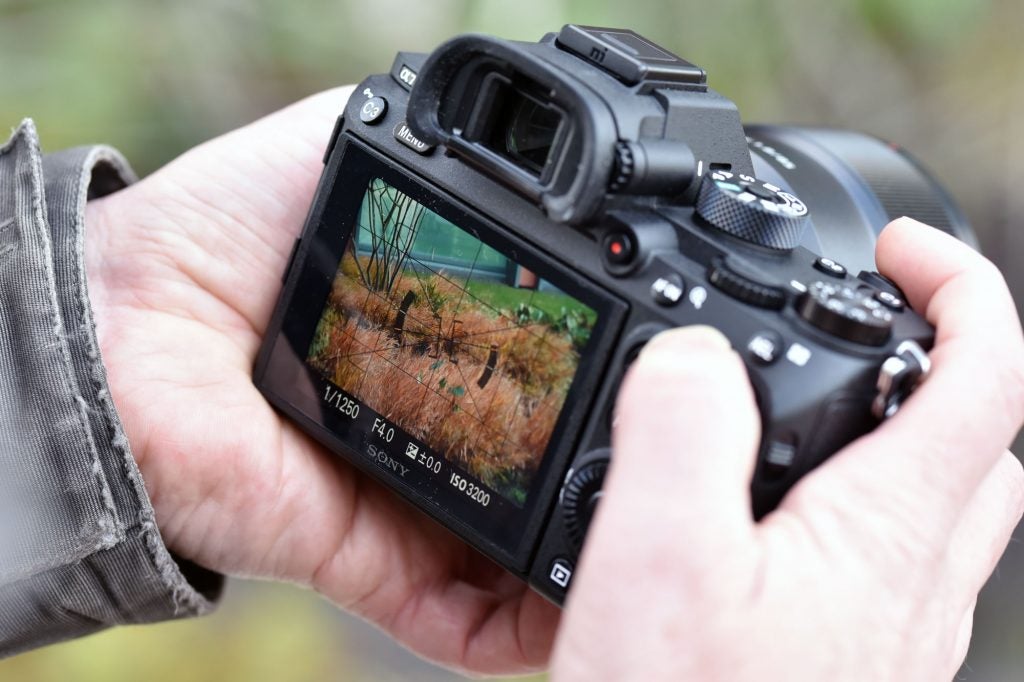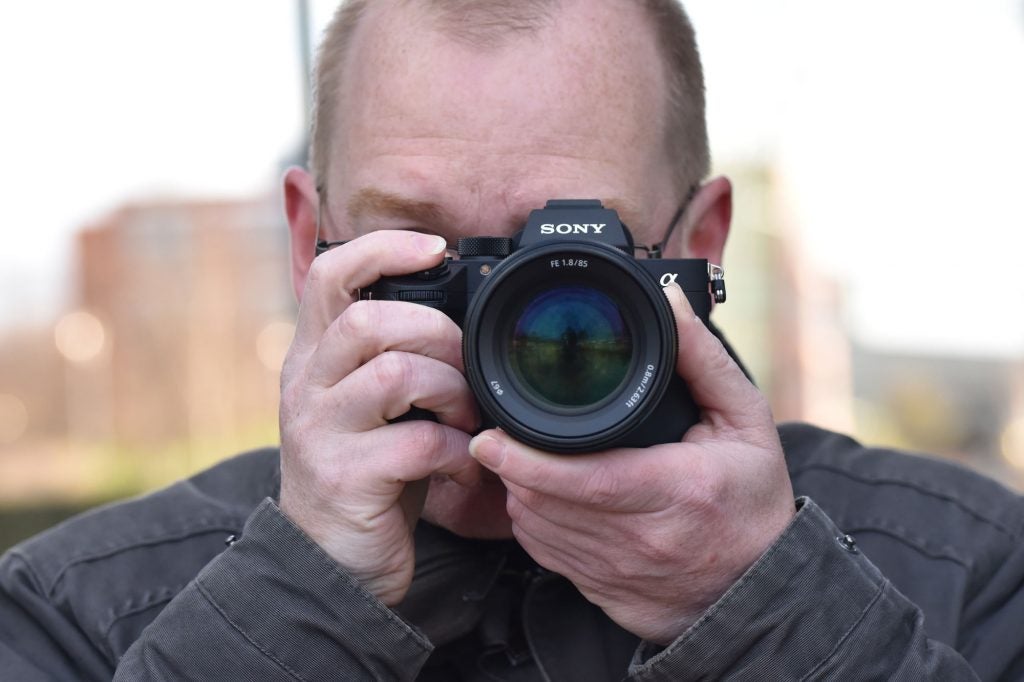Sony A7R III Review
Sony A7R III Review
The best mirrorless camera that money can buy
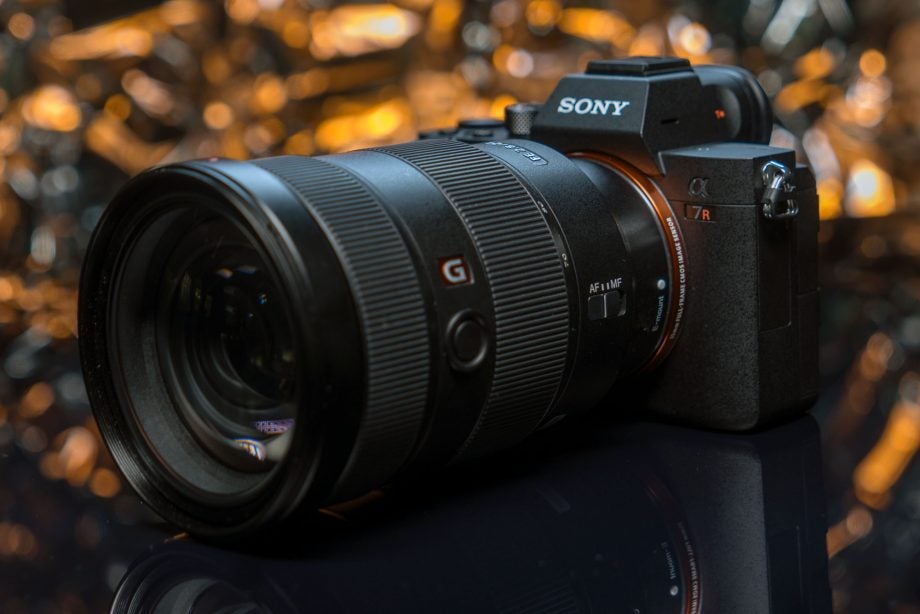
Verdict
Quite simply, the Sony A7R III is a ludicrously brilliant camera, and one of the very best on the market.
Pros
- Phenomenal image quality in almost any situation
- Extremely fast and responsive
- Compact, lightweight design with well-placed controls
- Superb electronic viewfinder
- In-body image stabilisation gives sharper images with any lens
Cons
- AF area is invisible when moved using the joystick
- Rear screen only tilts up or down
- Handgrip too close to the lens for shooting with gloves
Key Specifications
- Review Price: £3200
- 42.4MP full-frame BSI CMOS sensor
- 10fps continuous shooting
- Hybrid AF with 399 phase-detection points
- ISO 100-32,000, ISO 50-102,400 expanded
- 5.5-stop in-body IS
- 4K video recording
Editor’s note: Sony has just announced the Sony A7R IV. We’ll be bringing you our first impressions of that new model soon, but in the meantime here’s our review of the Sony A7R III.
Related: Join the resolution: Sony A7R IV is the world’s first 61MP full-frame camera
What is the Sony A7R III?
The Sony Alpha 7R III is Sony’s latest high-resolution, full-frame mirrorless camera. It offers impressive all-round specifications, with a 42.4MP sensor, 10fps continuous shooting, a hybrid AF system that employs 399 phase-detection points covering approximately 68% of the frame, and 4K video recording. It costs £3200 body-only.
It’s now four years since Sony unveiled the world’s first full-frame mirrorless cameras, in the shape of the 24MP A7 and 36MP A7R. A year-and-a-half later, we saw the updated A7R II, with a groundbreaking 42.4MP sensor, built-in 5-axis image stabilisation, and a much-improved body design. Now it’s time for round three, in the form of the Alpha 7R III.
Sony has clearly decided to stick to what it knows best and kept to a very familiar template, with a compact, SLR-styled body and central electronic viewfinder. But it’s taken the A7R II design and added many of the best features it debuted on the Alpha 9 earlier this year, with the aim of addressing those aforementioned weaknesses. The result is a very impressive camera with a remarkable combination of resolution, shooting speed and high-ISO image quality.
Of course we’ve seen something very similar recently, with the Nikon D850 earning high praise as the best DSLR we’ve reviewed to date. The two cameras are priced in the same ball-park (£3200 for the A7R III, £3500 for the D850) so they’re bound to be closely compared; they’ll surely also leave Canon users pondering the value of the similarly-priced but comparatively under-spec’d EOS 5D Mark IV. The question, though, is can the mirrorless A7R III genuinely compete with such an exceptional DSLR?
Related: Best tripods
Sony A7R III – Features
Sony has employed essentially the same excellent 42.4MP back-illuminated full-frame sensor as the A7R II, with on-chip phase detection for autofocus. However it’s now been teamed up with the latest Bionx X processor and front-end LSI, bringing a slightly extended standard sensitivity range of ISO 100-32,000, expandable to ISO 50-102,400. The camera is said to offer fully 15 stops of dynamic range at ISO 100, which can be recorded into its 14-bit RAW files even during continuous or silent shooting (where the A7R II fell back to 12-bit raw).
Speaking of which, the A7R III is substantially faster than the previous model, capable of shooting at 10 frames per second (rather than 5), or 8 fps with live view between frames. It also has a considerably larger buffer, which means it can shoot 28 uncompressed RAW files in a single burst, or alternatively 76 compressed RAW or JPEG files. This counts as a rare combination of resolution and speed, surpassed only by Sony’s own Alpha 99 II electronic-viewfinder DSLR. A new shutter unit promises low vibration, and is rated for 500,000 cycles; a silent fully-electronic shutter is also on hand for those occasions when you want to shoot as discreetly as possible.
Autofocus uses a hybrid system covering most of the image area, with 399 phase-detection and 425 contrast-detection points, a considerable increase on the 25 CDAF points in the A7R II. Sony says that it’s incorporated the autofocus algorithms it developed for the Alpha 9, promising a ‘quantum leap’ in AF performance, with 2x faster focusing alongside big improvements in focus tracking and Eye-AF performance.
Like its predecessor, the A7R III includes 5-axis in-body image stabilisation that works with practically any lens. But thanks to improved algorithms, it now promises blur-free hand-held shooting at shutter speeds 5.5 stops slower than would otherwise be possible. According to Sony, this is the most effective image stabilisation system yet employed by a full-frame camera.
In a very welcome addition, the A7R III uses the same uprated NP-FZ100 battery as the Alpha 9, offering over twice the capacity of the old NP-FW50. It’s specified for 650 shots using the LCD, or 530 with the EVF, according to CIPA standard testing. The A7R III also gains twin SD card slots, one of which is of the faster UHS-II type, and can automatically switch between them when one fills up.
Sony has also added a couple of features that are completely new to the A7R III. Alongside the conventional Micro-USB port, there’s a high-speed USB-C, which allows tethered operation via Sony’s new free Imaging Edge software. Alternatively, you can charge the camera through one USB port while using a cable release with the other.
In a much-requested addition, it’s now possible to protect images in-camera during playback, or assign them star ratings that are recognised by Adobe Lightroom and Bridge. Another neat touch is that bursts of images can be grouped together in playback, making it quicker to browse through your day’s shooting. I’ve found these features to be particularly useful.
Wi-Fi is built in for connection to a smartphone or tablet, using Sony’s free PlayMemories Mobile app for Android and iOS. This enables full remote control of the camera, complete with a live view display. Sony also makes it particularly easy to transfer images from the camera to your device, simply by pressing the Fn button on the camera’s back during playback. You can also geotag your pictures as you shoot using your phone’s GPS, via the newly-added Bluetooth connection.
However a few features are missing compared to what I’d expect at this price. For instance there’s no in-camera raw conversion, which almost every other brand now offers. Nor is there a built-in intervalometer, and with Sony having apparently abandoned its downloadable PlayMemories camera apps, no option to add one. So if you want to shoot time-lapse, you’ll have to make use of an old-fashioned remote release or a third-party solution such as the Cascable 3 Wi-Fi app. This is disappointing for a £3300 camera.
Related: Best camera bags
Sony A7R III – Build and handling
At 126.9 x 95.7 x 73.7mm and 657g, the A7R III is essentially the same size as its predecessor, but it has a slightly deeper grip to accommodate the larger battery. As a result it feels subtly better in your hand, offering a very positive hold even with larger lenses such as the FE 24-70mm f/2.8 GM. There’s very little to complain about in terms of build quality, which feels every bit as solid as Canon and Nikon’s full-frame DSLRs. The main question mark in terms of build hangs over the somewhat slight plastic covers for the connector ports, and whether they will provide as good sealing in really difficult conditions as the thick rubberised covers on the likes of the D850.
While the A7R III uses essentially the same top-plate control layout as the previous model, on the back it resembles the A9. So in a hugely welcome move it gains an AF-on button and AF-area selection joystick, along with a much better-positioned movie button and a larger, easier-to-use rear dial than the older model. All of the controls can be easily adjusted with the camera to your eye, with the joystick being especially well placed.
Indeed with the option to use separate dials for each of the main exposure parameters (shutter speed, aperture, ISO and exposure compensation), the A7R III does a great job of placing the most important settings at your fingertips. It also has plenty of user-configurable custom buttons, which can be assigned to different functions during stills and video shooting or playback. It’s even possible to program up to seven different camera set-ups for recall from the mode dial, and three specific subsets of shooting parameters that can be temporarily engaged by pressing down a custom button (for instance, to change focus and drive modes for when a subject starts moving). This makes the camera incredibly customisable, however it’s also pretty bewildering when you’re first getting to know it.
Unfortunately, though, the A7R III doesn’t inherit the A9’s top-plate drive and focus mode dials; instead these functions are accessed from external buttons. Presumably Sony assumes users will change these settings less often than on the action-focused A9. It’s not a huge problem, but it means the A7R III is a bit less fluid to use than it could be.
Shooting with gloves on chilly winter days reveals another flaw – the handgrip is placed too close to the lens mount. As a result, with anything other than thin gloves, you’ll struggle to squeeze your fingers into the gap. In such situations I wished Sony had used a slightly larger body design more like the Olympus OM-D E-M1 Mark II or the Panasonic Lumix DC-GH5. Photographers who prefer using back-button focus may also find the AF-ON button to be awkwardly-placed too close to the viewfinder, especially if they shoot left-eyed.
Sony’s relative inexperience also tells in the layout of the camera’s connector ports. Oddly the headphone and microphone sockets aren’t behind the same cover; instead if you want to use them while recording video, you’ll end up exposing the PC sync and HDMI ports too. Likewise, the corner-mounted micro-USB remote release port is awkwardly located for use with the L-brackets beloved by landscape photographers. Again, though, these are irritations rather than deal-breakers.
Sony A7R III – Viewfinder and screen
Like the A9, the A7R III employs a large, high-resolution 3.69-million-dot EVF, which provides a bright, detailed view that’s as large as any full-frame DSLR’s. Depending on your preferences, it can be set to either 60fps or 120fps display modes, with the latter promising more fluid motion at the expense of increased viewing artefacts such as moiré or jaggies. You can chose to overlay a wide range of additional information, but in one of Sony’s on-going failings, it’s not possible to see a live histogram and electronic levels simultaneously. Even so, the EVF is so good that I used it for the mast majority of the images I shot.
On the back the LCD has been upgraded to 1.44-million dots, with Whitemagic technology for improved brightness. It’s also touch-sensitive for setting the focus point and examining magnified images in playback. Sadly though, Sony has insisted on sticking with its relatively inflexible tilt-only design. This has the advantage of being very compact and not interfering with connector ports, but it becomes useless the moment you switch the camera to portrait format. I’d have preferred to see a dual-axis tilt or fully-articulated design, as on other top-end mirrorless cameras.
Related: Best mirrorless cameras
Sony A7R III – Autofocus
Like other mirrorless models the A7R III uses the main image sensor for autofocus, employing a combination of phase and contrast detection. This has a number of advantages compared to DSLRs; the focus area covers a much wider area of the frame, and there’s no need to program in micro-adjustments for each of your lenses to fine-tune accuracy. As a result it’s much easier to get consistently sharp images.
As usual from Sony you get an array of focus area modes to choose from. In Wide mode the camera will try to identify the subject wherever it may be in the frame, while Zone restricts it to smaller areas. In Flexible Spot mode you can position the focus point manually almost anywhere in the frame; with Expand Flexible Spot, surrounding focus points are used to assist the camera in focusing. For shooting portraits, Sony has included its impressive Eye AF mode, which detects and focuses specifically on your subject’s nearer eye. This works remarkably well, acquiring correct focus with ease even when you’re shooting off-centre subjects with fast lenses, where DSLRs tend to struggle.
However most users will, I suspect, spend a lot of time in Flexible spot mode, setting the focus point using either the touchscreen or the joystick. With the former the camera behaves entirely sensibly, highlighting the AF area in orange so you can see where it is. But if like me you prefer to use the joystick, the focus area is drawn in a dull mid-grey that makes it essentially invisible, which defeats the point of adding that control in the first place. It’s remarkably incompetent of Sony not to have fixed this from the Alpha 9, and a serious failing if you prefer to position your AF point manually. This may sound like a minor niggle, but I found it impacted on the majority of shots I took. It’s a serious flaw and in real need of a firmware fix (which should be trivial for Sony to deliver).
This is a shame, as the autofocus is really very good indeed. It’s genuinely fast, which means that unlike with the A7R II, you don’t find yourself constantly feeling just that little bit held up by the camera. As usual accuracy is spot on, just as long as you pay close attention to where you place the focus area. The AF also continues to work very well in low light. The camera’s impressive performance isn’t just restricted to static subjects, either – it’s also capable of keeping up with those that move. It’s perhaps not as unerringly reliable and accurate as the Alpha 9, but it’ll usually keep your subjects acceptably sharp over the course of a burst, and works especially well in concert with Eye AF.
Sony A7R III – Video and 4K HDR
Like its predecessor, the A7R III is capable of recording 4K video, using either the full width of the sensor or a Super-35 crop. In the latter mode it oversamples rather than pixel-bins, giving sharper, more detailed footage. Those hoping for high frame-rates in 4K will have to wait – the maximum is still 30fps – but what the A7R III does bring to the table is 4K HDR using Hybrid Log Gamma, allowing high dynamic-range playback on compatible TVs, with no need for any additional processing. The camera can also simultaneously output low-resolution proxy footage, which simplifies editing for videographers who use low-powered mobile devices on the move.
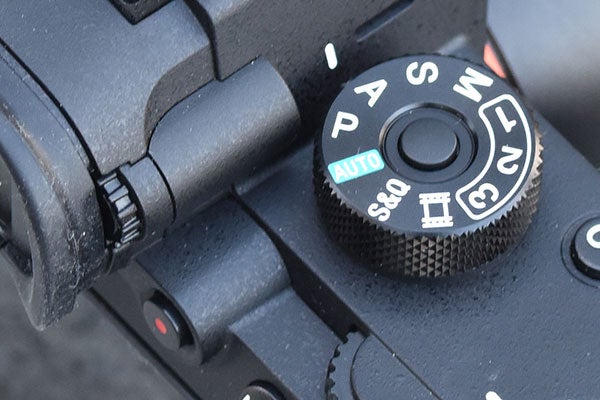
Recording is initiated using the red button beside the viewfinder, and there are dedicated video and S&Q positions on the mode dial
Naturally Full HD recording is also available at frame rates up to 120fps, while microphone and headphone sockets are built-in for better-quality sound recording. There’s a huge array of other video-specific features available too, including zebra pattern over-exposure warnings, a customisable peaking display for manual focus, and S-Log gamma for easier colour grading in post-processing. Sony has also included its S&Q (Slow and Quick) mode, allowing Full HD recording at rates from 1fps to 100fps – in effect from one-quarter-speed slow motion, up to 8x-speed quick motion.
It’s not just the video specs that are impressive: the Alpha 7R III delivers excellent quality footage that’s full of detail. The in-body image stabilisation also does an excellent job of smoothing out the shakes from hand-held shooting. If you want to shoot video as well as stills, it’s an incredibly capable camera.
Sony A7R III – Pixel Shift Multi Shooting
Sony has introduced a new ‘Pixel Shift Multi Shooting’ mode that uses the IS system to take four frames of the same scene while shifting the sensor precisely one pixel between each, rather like we’ve previously seen on Pentax DSLRs. It writes four standard ARW raw files to card, which can then be combined to a new ARQ format using Sony’s Imaging Edge software on a laptop or desktop computer. This produces a composite file with full-colour sampling at each pixel location, which can be output in either JPEG or TIFF format.

In Pixel Shift Multi Shooting mode, the A7R III resolves astonishing detail. FE 24-105mm f/4G OSS at 24mm, 1/125sec at f/8, ISO100
In the camera’s default setup, the mode can only be engaged from the menu, but I added it as a shortcut to the Fn menu in place of focus mode (which has its own external button). One disadvantage is that the camera has to wait a second or more between frames, which causes problems in scenes where any part of the subject is moving.
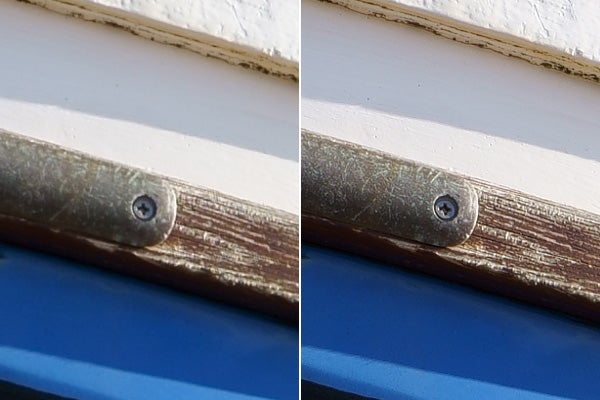
Pixel shift multi shot mode (right) compared to a single raw file processed using Sony Imaging Edge
This kind of multi-shot mode is pretty much a known quantity now, and Sony’s version brings no big surprises. So you get substantially higher-quality images compared to conventional single-shot mode, with vastly improved tonality and fine detail when viewing your images at the pixel level. You can see this in the example above, although it must be said the Sony Imaging Edge hasn’t done a great job on the single raw file, and you could tease more detail out using other software such as Capture One.
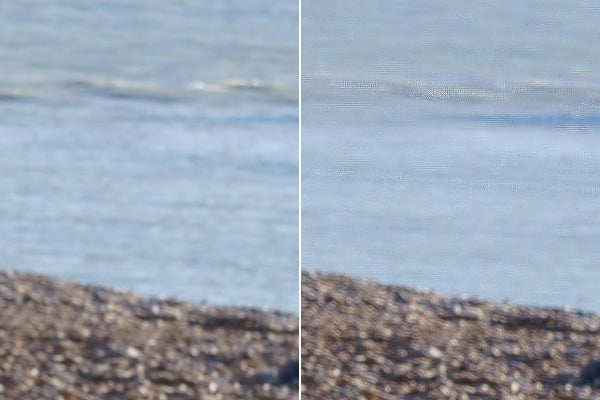
Pixel shift multi-shot (right) compared to a single raw
However, this quality is maintained only if nothing moves between exposures; if it does, you end up with an unholy mess. In the crops above, you can see some nasty grid-like artefacts on the out-of-focus waves, along with ugly rendition of the stones on the beach. With most landscapes, you’ll see this kind of thing all over your images, and quickly realise just how rare it is for anything to stay absolutely still. It can be remedied in some cases by combining the single-shot and multi-shot images in Photoshop and masking away the worst artefacts, but with complex landscapes it’s not really an option (or at the very least, a huge amount of work!).
This all means that, just like other manufacturer’s similar modes, Pixel-Shift Multi-shot is great for product photography or still life, but has no chance of working for portraits or almost any landscape. In those situations where Pixel Shift mode does work, however, the A7R III gives some of the most finely-detailed images I’ve seen from any camera.
Sony A7R III – Performance
When it comes to in-the-field use, the A7R III is clear improvement on its predecessor, which could often feel a little sluggish. Indeed it’s now a very snappy performer that simply gets on with the job with minimal fuss. Most notably, its considerably upgraded autofocus and continuous shooting abilities make it a credible option for high-speed action work. Shooting wildlife in full resolution raw at 10 fps, I found I was able to rattle off repeated bursts practically at will, at least until I ran out of space on my UHS-II card.

The A7R III is quick enough to focus on skittish wildlife, even using an adapted lens. Canon EF 70-300mm f/4-5.6 IS USM at 300mm with Sigma MC-11 adapter, 1/1000 sec at f/5.6, ISO 12,800
Battery life is much-improved over the A7R II too, with the NP-FZ100 providing sufficient juice for a fairly intensive day’s shooting. This is still a mirrorless camera, of course, so you have to learn to treat it differently to a DSLR, flicking the power switch off when you’re not using it. But it doesn’t need anywhere near the same degree of babying and obsessive power conservation as before, and I suspect most photographers will find the A7R III’s stamina to be perfectly satisfactory.

The A7R III resolves insane amounts of detail, especially for subjects amenable to pixel shift multi shot. Sony FE 24-105mm f/4 G OSS at 105mm, 1/800 sec at f/8, ISO 100, pixel shift mode
Image quality is, as we’d expect, exceptional. While Sony’s 42.4MP sensor is a few years old now, it’s still one of the best on the market, matched solely by the 45.7MP unit in the Nikon D850. It provides an exceptional blend of high resolution at low sensitivities with very low noise when the ISO is raised. Dynamic range is truly astonishing, especially at ISO 100, with the ability to pull an immense amount of detail from deep shadows without excessive noise. This allows you expose to retain highlight detail in extremely high-contrast scenes, then process the raw file to bring up the shadows.

The auto while balance produces attractive colours in JPEG mode. Sony FE 24-105mm f/4 G OSS at 64mm, 1/250sec at f/8, ISO 800
On the whole the camera’s automated systems do a very good job. The metering is generally very reliable in its multi-pattern mode, and it’s easy to visualise in the viewfinder when the camera will overexpose and dial in the requisite corrections. Alternatively the highlight-metering mode can be handy in high-contrast situations where you want to be sure of retaining detail in the brightest regions of the frame. I’ve also found the auto white balance to be less prone to introducing odd colour casts compared to previous Sony models, with the A7R III generally providing more attractive colour output as a result. Indeed in my couple of weeks shooting with the camera, it’s barely put a foot wrong.
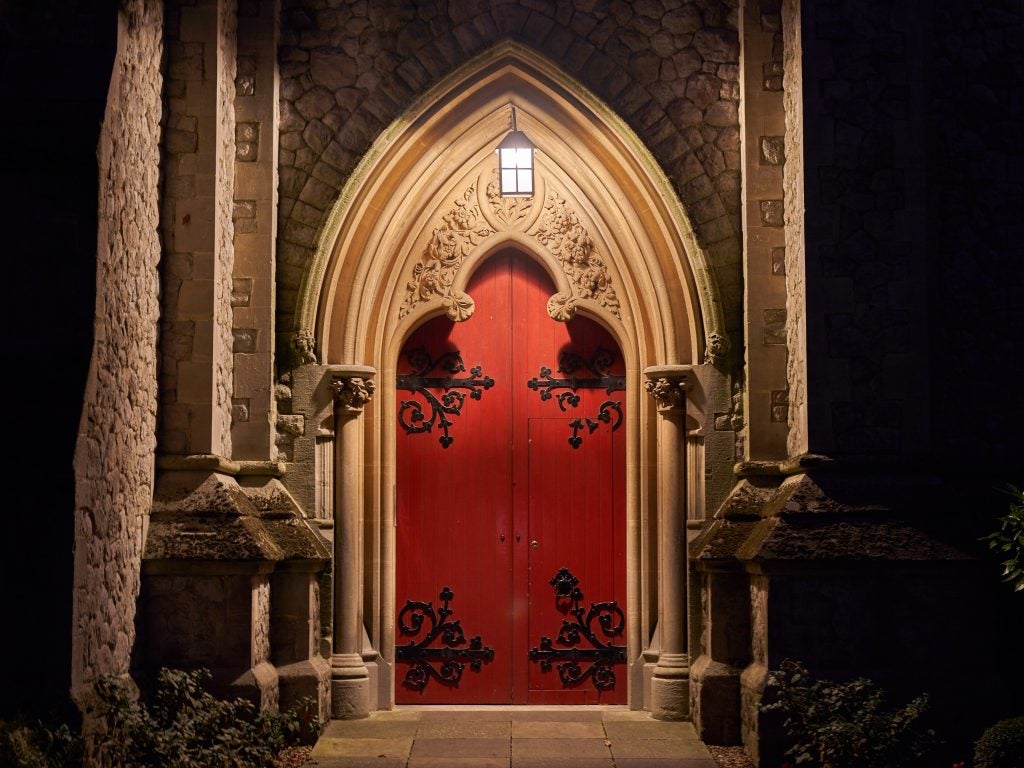
Slow shutter speeds let you use low ISOs for maximum dynamic range. Sony FE 24-70mm f/2.8 GM, 1/2sec at f/2.8, ISO 100
Special mention should be made of the in-body image stabilisation, which is extremely effective, particularly when used in concert with Sony’s optically-stabilised lenses. But it also lets you shoot hand-held at slow shutter speeds with unstabilised lenses such as fast primes, and quite simply lets you get sharp shots over a much wider range of conditions. In the example above I exposed for the area around the light, and was able to shoot hand-held at 1/2sec, and therefore use ISO 100. The JPEG file was almost completely black, but I was able to bring up lots of detail out of the shadows by processing the raw file in Capture One. Overall I think the in-body IS is the A7R III’s single biggest advantage over DSLRs like the Nikon D850, and reason enough to choose it instead.
Sony A7R III – Image quality
Sony has used the same 42.4MP BSI CMOS sensor as we previously saw in the Alpha 7R II, and just as in that camera, it gives absolutely superb results. Not only does it provide stunning levels of detail at low sensitivities, it also provides perfectly usable images at much higher settings than you might expect, with ISO 12,800 or even ISO 25,600 being perfectly feasible. The raw files are highly malleable too, and it’s possible to extract a lot of extra detail from deep shadows in post-processing without also bringing up excessive noise.

High ISO image quality is remarkable – I shot this at ISO 40,000. Canon EF 70-300mm f/.4-5.6 IS USM at 300mm via Sigma MC-11 adapter, 1/1000sec at f/9, ISO 40,000
Sony A7R III – Resolution
With its 42.4MP sensor and now low-pass filter the A7R III gives really impressive results, resolving at least 4800 l/ph before the lines of our test chart start to blur together. Some false detail is rendered at higher frequencies, which can give the impression of even higher resolution in real-world shooting, although at the risk of maze-like aliasing and false-colour moiré. The camera’s impressive noise performance also means that resolution doesn’t drop appreciably even at ISO1600. At higher ISO settings noise has an increasing impact, but even at ISO12,800 the sensor delivers at least 3,200 l/ph. Naturally the top settings aren’t so great, but a reading of 3,200 l/ph at ISO 102,800 is still pretty impressive.
Here our chart was shot from twice the normal distance due to the A7R III’s sheer resolution, so in the crops below multiply the number below the lines by 400 to get the resolution in lines/picture height.
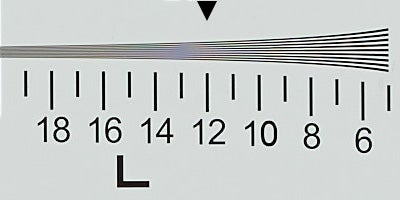
Sony A7R III resolution, ISO 50, raw + Capture One
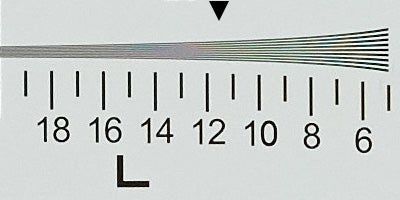
Sony A7R III resolution, ISO 1600, raw + Capture One
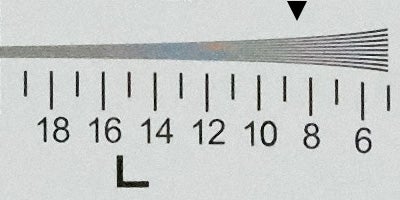
Sony A7R III resolution, ISO 12800, raw + Capture One
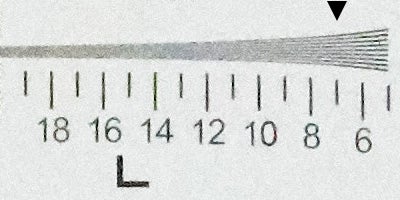
Sony A7R III resolution, ISO 102400, raw + Capture One
Sony A7R III – ISO and Noise
At low ISOs the Alpha 7R III gives truly stunning results, with huge amounts of detail and no visible noise. What’s more, there’s mot that much change at ISO 1600, with just the finest low-contrast textures starting to blur away, and it’s only at ISO 6400 that the image really starts to visibly degrade. By ISO 25,600 most pixel-level detail has blurred away and shadows start to block up, but colours are still strong. At extended ISO settings detail and colour suffer considerably, but even at ISO 51,200 the remarkably clean shadows mean that images are still usable at a pinch.
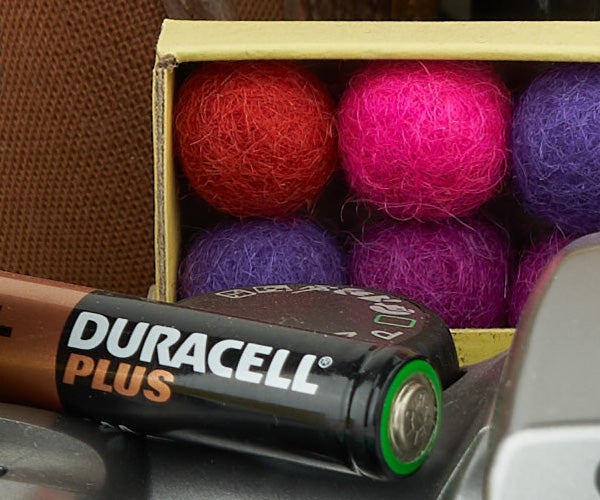
Sony Alpha 7R III, ISO 50, raw + Capture One
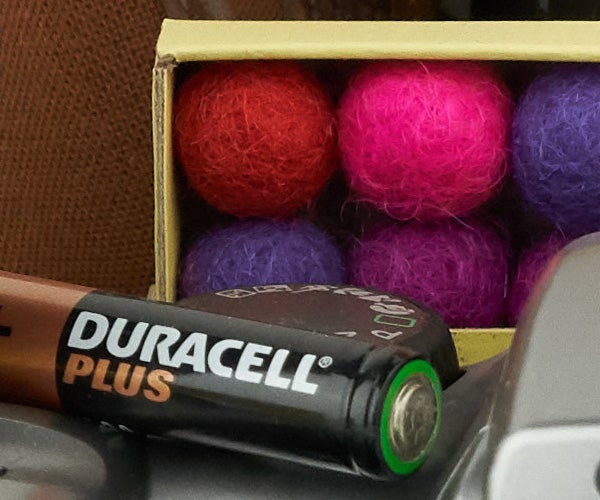
Sony Alpha 7R III, ISO 1600, raw + Capture One
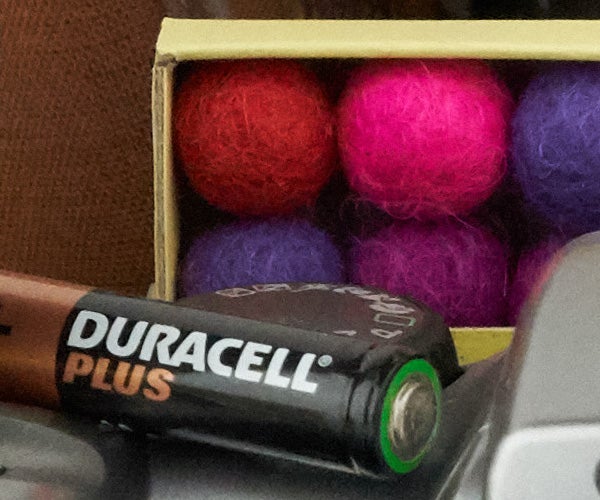
Sony Alpha 7R III, ISO 6400, raw + Capture One
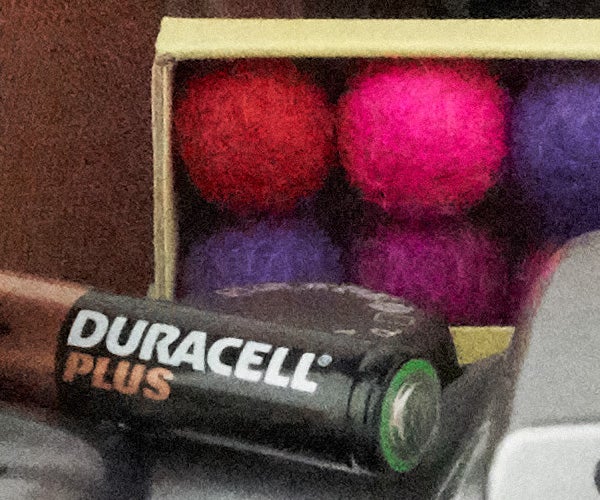
Sony Alpha 7R III, ISO 25600, raw + Capture One
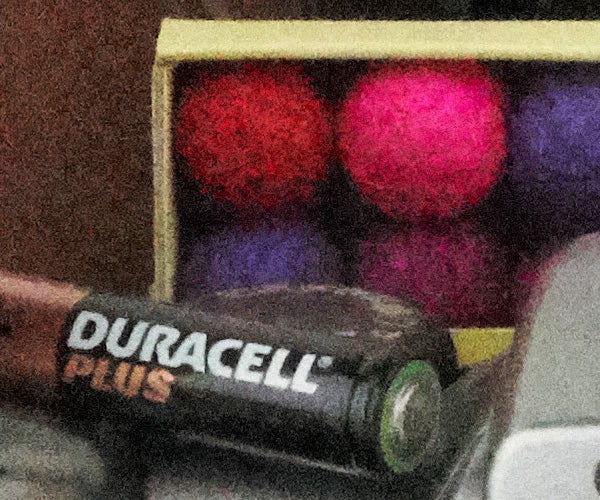
Sony Alpha 7R III, ISO 51200, raw + Capture One
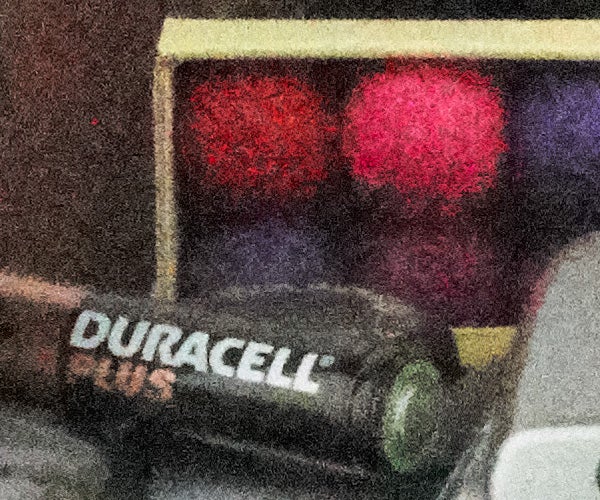
Sony Alpha 7R III, ISO 102400, raw + Capture One
Why buy the Sony A7R III?
With the Alpha 7R III, Sony has done a fine job of developing the A7R II design. It’s retained the same absolutely stunning image quality, but added substantially faster autofocus and continuous shooting. Throw in the larger battery and improved control layout, and it feels like a camera that can handle practically anything that’s asked of it.
Indeed it’s difficult not to conclude that the Alpha 7R III is the best mirrorless camera yet made. It may not have the out-and-out speed of the Sony A9 or the sublime handling of the Fujifilm X-T2, but it’s still very quick, and works very well too – certainly much better than its finicky predecessor. Alongside the Nikon D850, it’s one of the best all-rounders you can buy.
Compared to the D850, though, the A7R III has all the usual advantages of mirrorless, including a truly accurate viewfinder preview, a more reliable and accurate autofocus system and a considerably smaller body, along with much better 4K video capability. But to me, its trump card is its in-body stabilisation, which is highly effective and works with every lens. Combine this with the on-sensor AF and vibration-free mirrorless design, and it’s simply much easier to get consistently sharp shots that make full use of the sensor’s remarkable resolution and dynamic range.
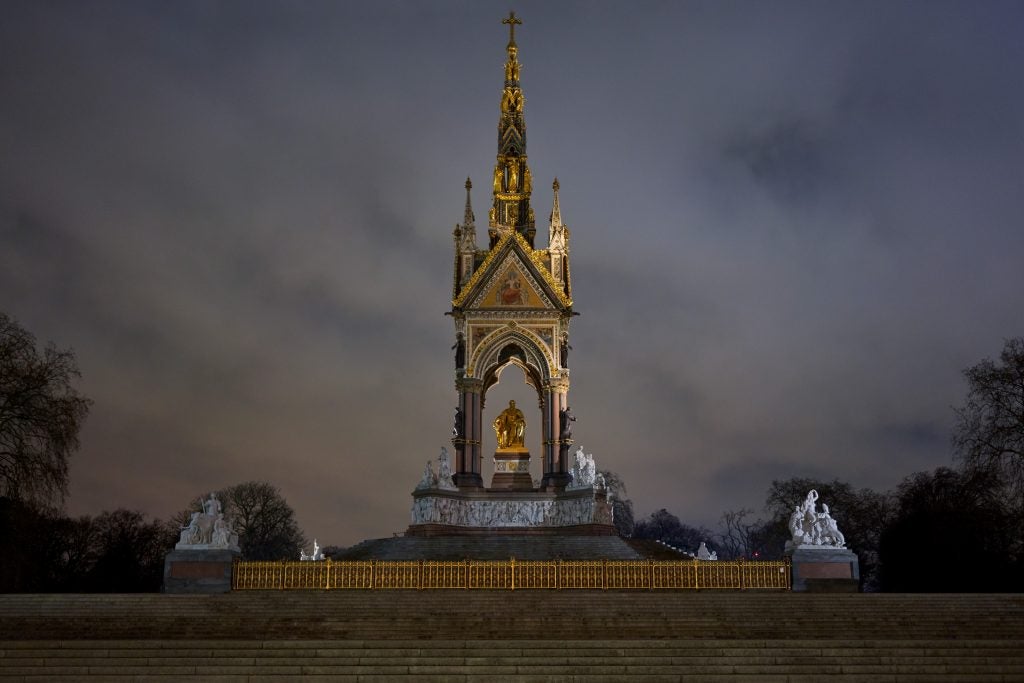
This might-time shot was hand-held at 1/5sec, and processed in Capture One. Samyang AF 35mm f.2,8 FE, 1/5sec at f/2.8, ISO 800
Perhaps the A7R III’s main disadvantage lies in its handling; it’s very much better than its predecessors, but still has a few quirks and weaknesses. In contrast, Nikon has refined its high-end DSLR design over many generations to near-perfection on the D850. Some photographers may also find the A7R III too small for comfortable use, while Sony’s fondness for making huge lenses partially negates the camera’s size advantage.
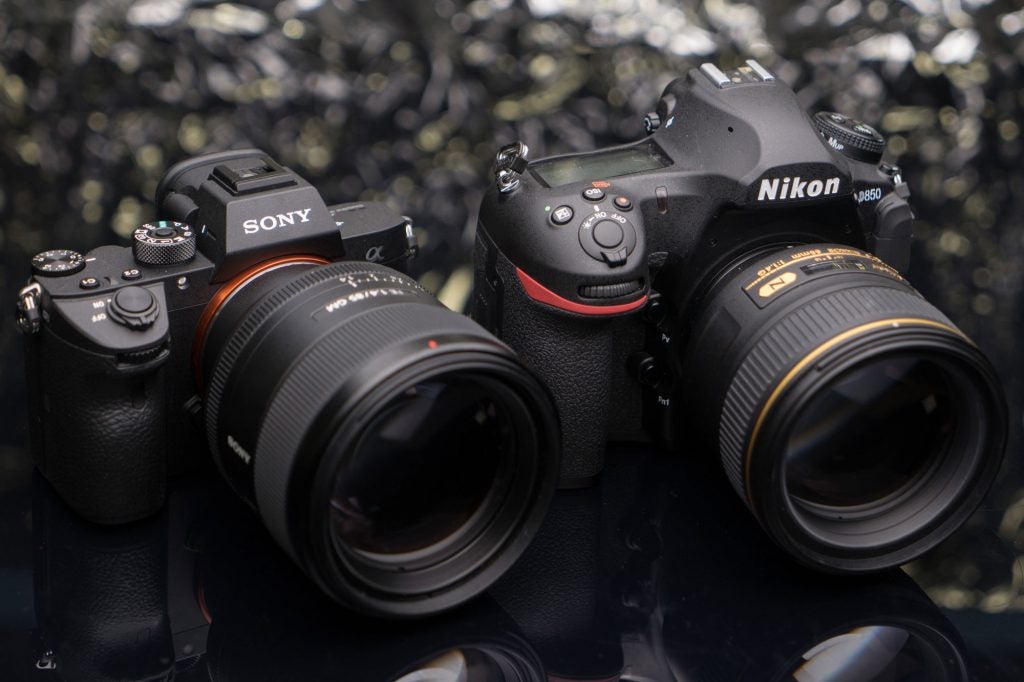
The A7R III’s size advantage over the Nikon D850 is partially offset by Sony’s tendency to make large lenses
Of course there are lot of DSLR users with considerable investment in lenses who are unlikely to switch systems right now. But there is no doubt the future is mirrorless, and the Alpha 7R III emphasises just how far ahead of the competition Sony is right now, at least in terms of the core technology. It’s an exceptionally capable camera that cements Sony’s domination of the high-end mirrorless market.
Related: Best cameras
Verdict
Quite simply, the Sony A7R III is a ludicrously brilliant camera, and one of the very best on the market.
Trusted Score
Features
| Megapixels (Megapixel) | 42.4 |
| Image Sensor | 42.4-million-pixel full-frame BSI CMOS |
| Shutter speed | 30-1/8000 sec |
| Auto focus | Hybrid with 399 phase-detection and 425 contrast-detection points |
| Max output resolution | 7,952 x 5,304 |
| Exposure metering | Multi, centre-weighted, spot, average, highlight |
| Exposure compensation | +/- 5EV, 0.3EV steps |
| Image Stabilisation | In-body 5-axis |
| ISO settings | ISO 100-32000 (standard), ISO 50 – 102400 (extended) |
| LCD Monitor | 3in, 1.44-million-dot tilting touchscreeen |
| Viewfinder | 3.69-million-dots, 0.78x magnification |
| Drive modes | 10fps; 8fps with live view |
| Image formats | JPEG, raw (ARW) |
| Video (max res/format) | 4K (3840 x 2160), 30p |
| Memory card slot | 2x SD, SDHC, SDXC (one UHS-II compatible) |
| Batteries supplied | NP-FZ100 Li-ion |
Physical Specifications
| Dimensions Width (Millimeter) | 126.9 |
| Depth (Millimeter) | 95.6 |
| Length (Millimeter) | 62.7 |
| Weight (body only) (Kilogram) | 0.657 |

